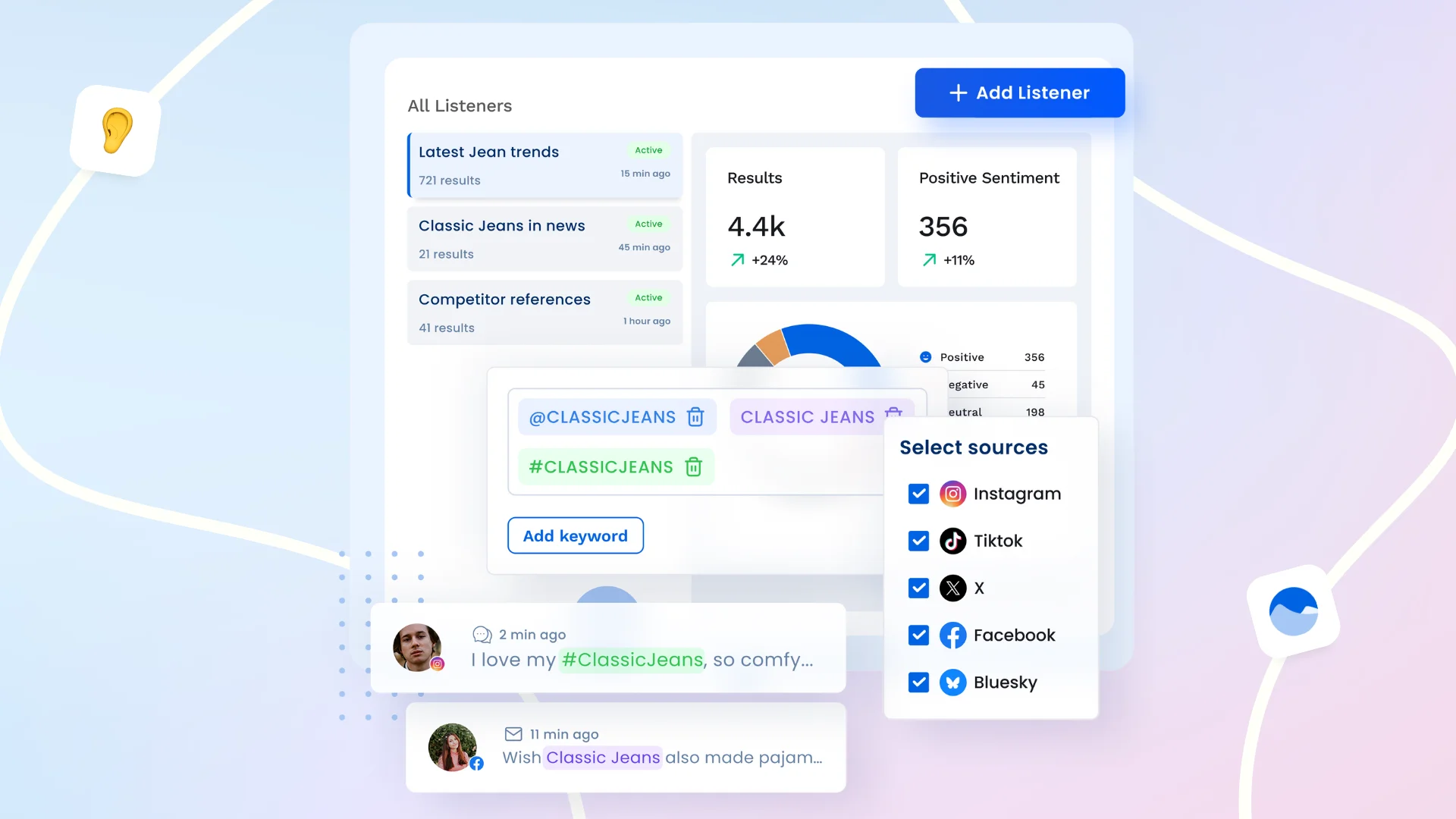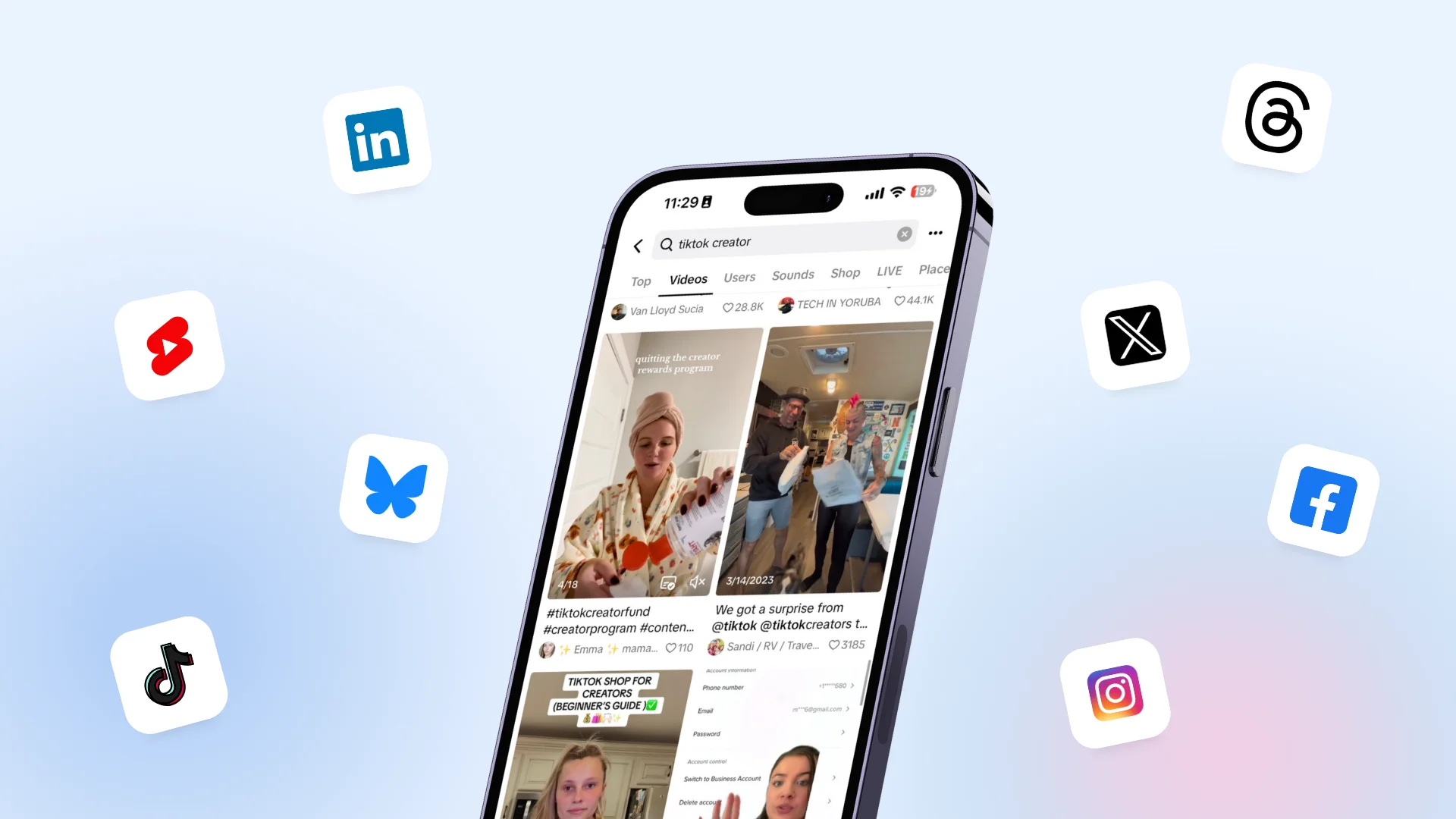New

Social Listening Made Simple: How to Use It for Brand Growth
Learn why social listening is no longer just for big brands and how Vista Social makes it affordable for creators, agencies, and small businesses.

How Something Social Saved 75% of Their Time and Increased Revenue by 15%
See how a fast-growing agency improved operations, cut down hours of manual work, and unlocked new revenue opportunities with Vista Social.
New

50 Unique Social Media Ideas for Consistent Content Creation
Discover 50 unique social media post ideas to engage your audience, grow your brand, and maintain a consistent content strategy with ease!
The Art of Storytelling in Affiliate Marketing: Crafting Narratives That Convert
Updated on September 19, 2024
6 min to read
Content Writer
Published September 19, 2024


Content
Share

In a world where a click or a swipe can seal a deal or cause someone to bounce faster than a trampoline, affiliate marketing success isn’t just about pushing links or offering discounts. It’s about connection. Authenticity. And, you guessed it—storytelling.
As an affiliate marketer, you’re not just a link pusher—you’re a storyteller. You weave the narrative that gets people excited about a product, not because it’s the best thing since sliced bread (though if you’re selling bread, more power to you), but because you’ve shown them how it fits into their life, their problems, and their story.
So, let’s dive into how you can master the art of storytelling in affiliate marketing to craft narratives that convert.
Table of contents
Why Storytelling Works: From Campfire Chats to Click-Through Rates
People have been telling stories since they figured out fire. It’s how we communicate, build relationships, and most importantly, remember things.
You might forget a bullet-pointed list of product features, but a good story? That sticks with you.In the fast-paced, saturated world of affiliate marketing, storytelling offers a way to stand out, cut through the noise, and make your pitch unforgettable.
Here’s why storytelling is a total game-changer in affiliate marketing:
1. Emotional Connection
People don’t just buy products—they buy solutions, experiences, and feelings. A story that evokes an emotional response creates a bond between you and your audience, making them more likely to trust your recommendation and, ultimately, convert.
2. Memorable Impact
Information overload is real, but stories make your content stick. A dry rundown of features might be skimmed and forgotten, but a compelling narrative? That lingers in the back of your reader’s mind, surfacing every time they think about the problem you addressed.
3. Building Trust
People trust people, not faceless marketers. When you tell a story—especially one that feels authentic and relatable—you humanize your brand. You become more than just someone promoting a product; you’re someone who understands their challenges and offers a genuine solution.
[Must read: Best Tech Affiliate Programs in 2024: Earn Money Around The Clock]
Crafting Your Affiliate Marketing Story: A Step-By-Step Guide
So how do you weave storytelling into your affiliate marketing strategy without sounding like you’re trying to audition for the next Pixar film? Let’s break it down.
1. Know Your Audience: Your Story Starts with Them
Every great storyteller knows their audience. Before you start spinning any tale, take the time to understand who you’re talking to. What are their pain points, desires, and motivations? Are they time-strapped parents looking for convenience, or fitness enthusiasts hunting for the latest gear to up their game?
Pro Tip: Personalize your narrative based on the specific needs of your audience. The more you can make your story resonate with their unique situation, the more likely they’ll see your affiliate product as the hero they’ve been waiting for.
2. The Hero’s Journey: Problem, Solution, and Triumph
Every gripping story has a hero—someone who faces a challenge and overcomes it with the help of a trusty sidekick (or in this case, your affiliate product). The key to storytelling in affiliate marketing is to cast your audience as the hero of the narrative, with your product as the solution that helps them conquer whatever’s holding them back.
Set the Stage: Introduce the hero’s problem. Let’s say you’re promoting a skincare line. Your hero might be someone who’s battled with breakouts for years, trying every solution under the sun. Nothing works—until your product comes along.
Introduce the Solution: Show how your product swoops in to save the day, offering relief, joy, or convenience. Highlight the benefits of the product within the story naturally—no one likes a hard sell, but everyone loves seeing how something can make their life easier or better.
Happy Ending: The hero is victorious. Their problem is solved, and they’re happier, healthier, or more efficient because of it.
3. Authenticity is Everything
Try Vista Social for Free
A social media management platform that actually helps you grow with easy-to-use content planning, scheduling, engagement and analytics tools.
Get Started NowThe modern consumer can sniff out inauthenticity from a mile away. While it’s tempting to paint your affiliate product as the end-all-be-all, it’s far more effective to be honest and relatable. Authenticity doesn’t mean perfection—it means showing the real pros and cons of the product in a way that feels genuine.
Share personal anecdotes or real testimonials from customers. Talk about how the product helped you, but also acknowledge if it didn’t solve everything (nobody trusts someone who claims perfection). You’re not just selling; you’re connecting. When people believe you, they’re far more likely to believe in the product you’re promoting.
4. Paint with Pictures (and Videos)
Stories aren’t just about words. Sometimes, a picture really is worth a thousand clicks. Visual storytelling can elevate your narrative, making it more immersive and engaging. Whether it’s a before-and-after photo, a how-to video, or a simple infographic, visuals make your story come alive and help people visualize the solution.
Example: If you’re promoting that skincare product, don’t just tell the audience how well it works—show them! Include photos that illustrate the product’s effectiveness or short videos that showcase the routine. People are more likely to believe what they see.
5. CTA: The Final Chapter
Every story needs an ending, and in affiliate marketing, that ending is the call to action (CTA). You’ve walked your audience through the journey, and now it’s time to give them the final push. Make your CTA clear, direct, and irresistible.
Instead of a generic “Buy Now,” try something more aligned with the narrative: “Ready to solve your skincare woes once and for all? Try [Product] and see the difference for yourself.” Or, “Take the first step towards glowing skin—order now and start your transformation.”
[Must read: 8 Affiliate Marketing Tips and Strategies to Earn More Money in 2024]
The Formats: Where to Tell Your Story
Now that you know how to tell a story, let’s talk about where. Storytelling works across multiple platforms, but you’ll want to tweak your approach depending on where you’re publishing.
1. Blog Posts
Perfect for in-depth storytelling, blog posts allow you to build a full narrative with context, characters, and details. Use a conversational tone to keep your audience engaged, and remember to structure the post with a problem, solution, and CTA.
2. Social Media
Short, snappy, and impactful—that’s the goal for storytelling on social media. Instagram stories, TikTok videos, or even Twitter threads can all be great formats for a condensed version of your affiliate story. Keep it visual, and don’t forget a CTA at the end.
3. Videos
Video storytelling takes things to the next level. Whether it’s a testimonial, a product review, or a day-in-the-life vlog, videos allow you to show, not just tell. And that’s where the magic happens.
4. Email Newsletters
Use email to craft mini-stories over time. You can create a series, like “My Journey to Better Skin,” where each email tackles a different part of the journey and ends with a link to your affiliate product.
Conclusion: Storytelling for the Win
At its core, affiliate marketing is about more than just driving traffic—At its core, affiliate marketing goes beyond driving traffic—it’s about forging meaningful connections. Storytelling is the tool that transforms a casual visitor into a loyal customer.
By crafting relatable narratives, you’re not just promoting products; you’re inviting your audience into an experience. A well-told story stays with people and prompts them to take action.
So, as you look to improve your affiliate marketing game, remember the power of storytelling. Every great product deserves a story that inspires and connects. With Vista Social’s seamless social media management tools, telling that story across multiple platforms has never been easier, allowing you to focus on crafting meaningful content while we handle the rest.
P.S. If you’re new around here, Vista Social is a feature-packed all-in-one social media management platform built to deliver unparalleled value to marketing agencies, freelancers and social media managers. We are the most advanced, user-first platform that sets a new benchmark for collaboration, efficiency, and effectiveness in social media marketing.
Create your Vista Social account now to see what all the buzz is about.
About the Author
Content Writer
Never Miss a Trend
Our newsletter is packed with the hottest posts and latest news in social media.

You have many things to do.
Let us help you with social media.
Use our free plan to build momentum for your social media presence.
Or skip ahead and try our paid plan to scale your social media efforts.
P.S. It will be a piece of cake 🍰 with Vista Social
Subscribe to our Newsletter!
to stay updated on the latest and greatest Social Media news
We promise not to spam you!


